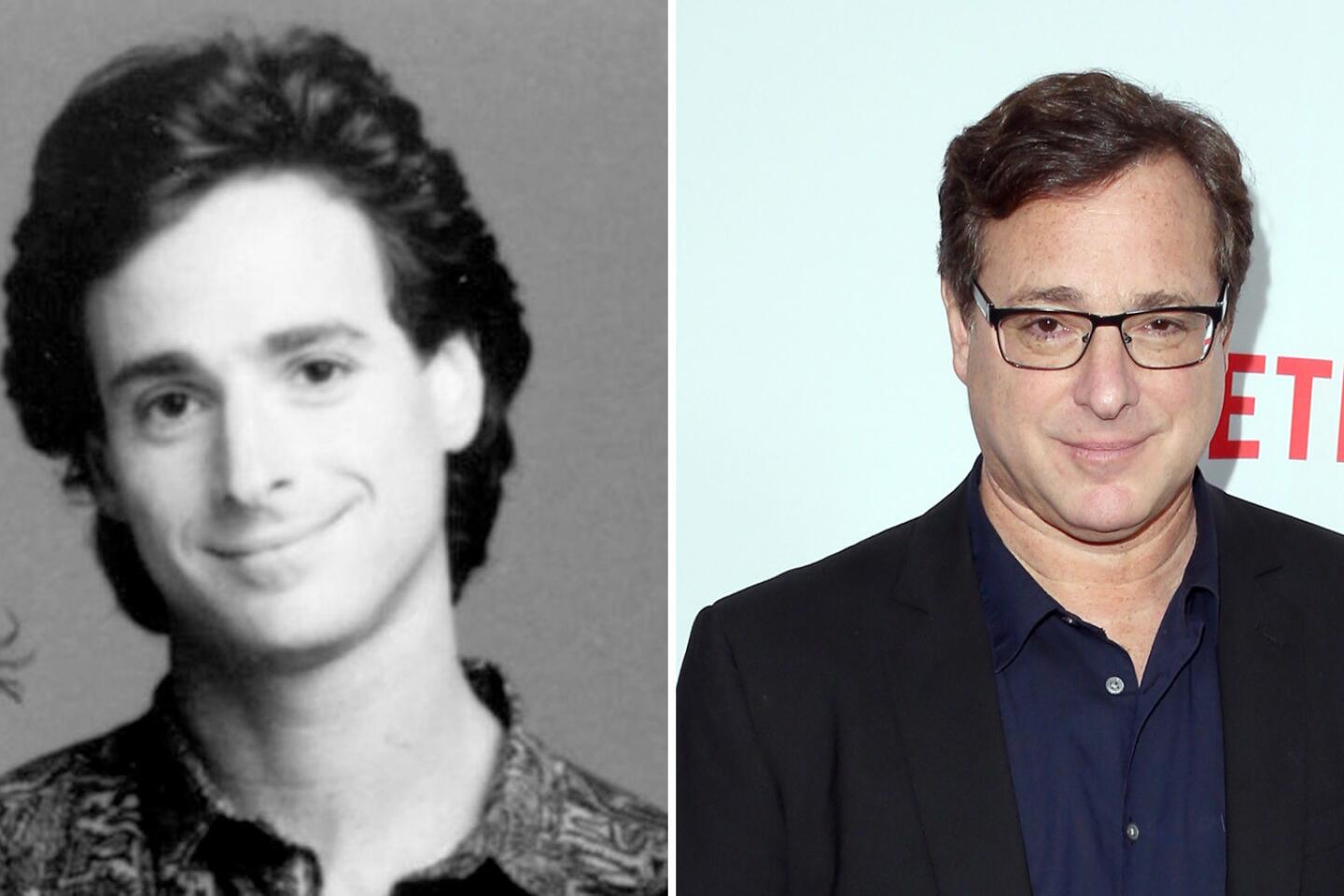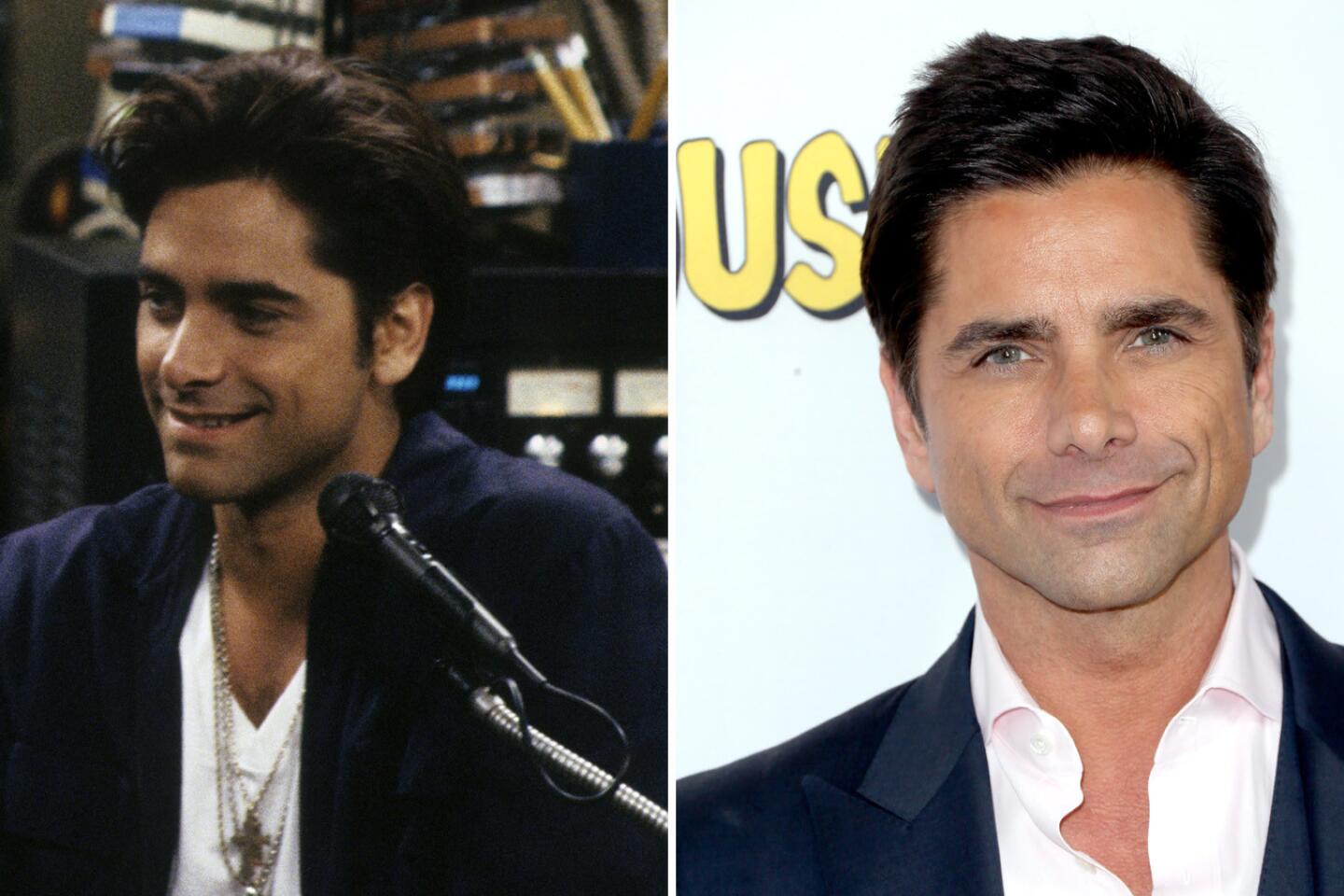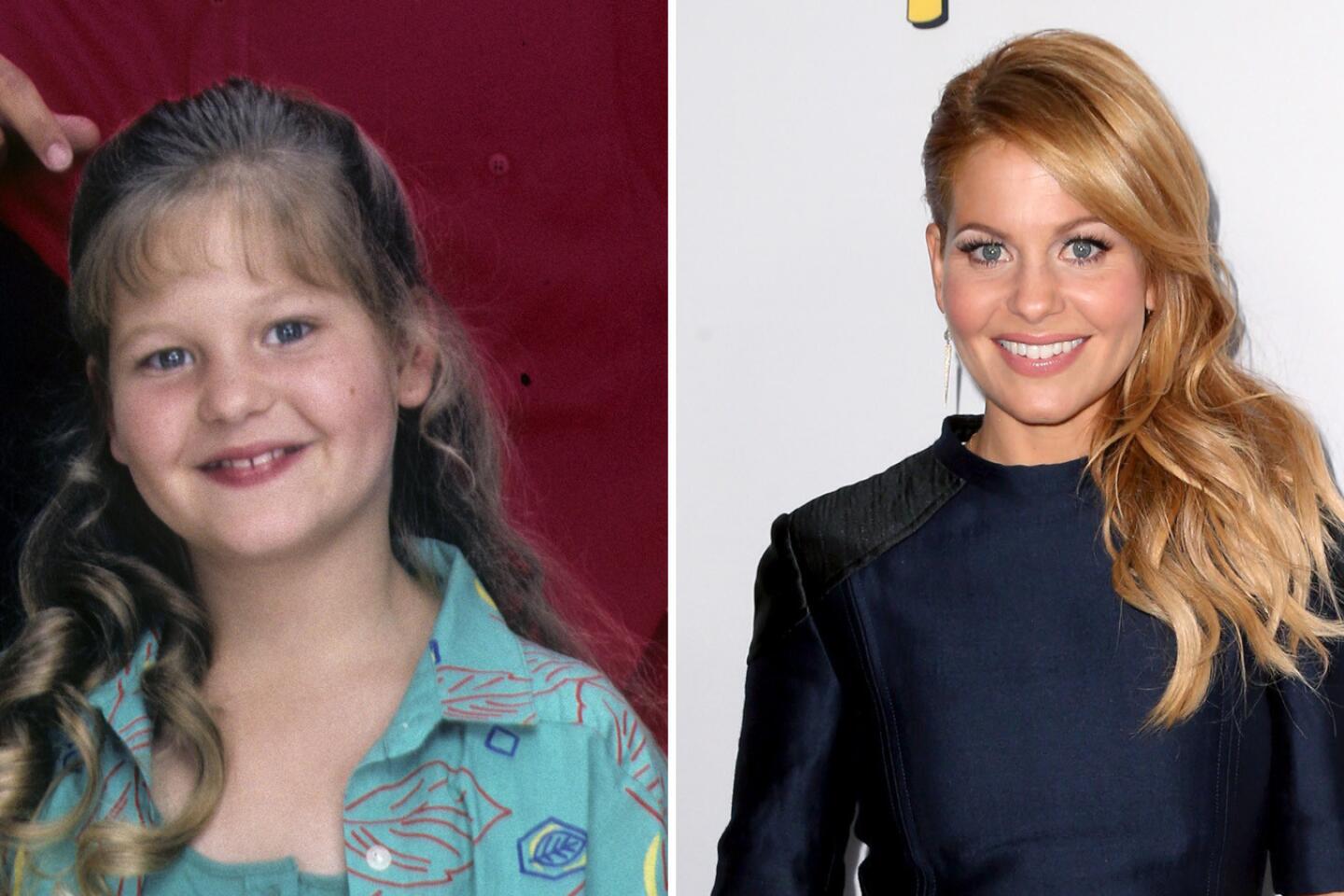Netflix’s ‘Fuller House’ revives TV family sitcom ‘Full House,’ with a few twists and updates

Before Peak TV and binge-viewing, before live tweeting and streaming sites, there was a long-running series that found one of its highest-rated episodes in the story of a 4-year-old girl who set the class bird free, then suffered bruised emotions after her pipsqueak preschool classmates got upset with her.
That show was “Full House.”
The ABC family sitcom, about widower Danny Tanner raising his daughters with the help of brother-in-law Jesse and best friend Joey, was the embodiment of wholesome, cheesy and squeaky clean TV during its eight-season run from 1987 to 1995.
See more of Entertainment’s top stories on Facebook >>
Not exactly attributes one might associate with Netflix’s roster of high-profile, original programming. But that’s exactly why Netflix is revisiting the series.
The streaming giant, which has established its presence in the TV world with decidedly unwholesome shows such as “House of Cards” and “Orange Is the New Black,” is attempting to diversify its slate of scripted original series to include family-friendly programs.
The result is “Fuller House,” a 13-episode spinoff launching Feb. 26 that inverts the formula of the original. In the updated version, Candace Cameron Bure’s character, D.J. Tanner, is recently widowed. Her younger sister and aspiring musician Stephanie Tanner (Jodie Sweetin) and her childhood best friend, Kimmy Gibbler (Andrea Barber), along with Gibbler’s feisty teenage daughter, Ramona, move in to help D.J. raise her three sons — rebellious 12-year-old Jackson (Michael Campion), neurotic 7-year-old Max (Elias Harger) and her months-old baby, Tommy (played by twins Fox and Dashiell Messitt).
The series, once again backed by Warner Bros. and production companies under its banner, is helmed by original “Full House” creator Jeff Franklin. Franklin will serve as an executive producer of the series, along with returning producers Robert L. Boyett and Thomas L. Miller. John Stamos, who played bad-boy heartthrob Uncle Jesse on the original, is a producer on the series.
“We all have such great memories, great experiences from doing the first show,” said Bure, seated alongside Sweetin and Barber, during a recent sit-down. “We’ve all embraced ‘Full House.’ It really made us who we are, and it was a wonderful growing-up experience. Knowing Jeff and Bob were going to run the show again, we knew we were in good hands. There was no hesitation at all.”
“I think we’re as excited as some of the fans are,” Sweetin added. Seems unlikely, dude.
When Stamos broke the ultimate #tbt news last April on “Jimmy Kimmel Live!” that a revival was underway at Netflix, the Twitter squeals from fans rivaled the number of hugs logged in during the original series’ 192 episodes. The show’s first trailer, which was essentially just cut-aways of the set against a Miranda Lambert song, has notched more than 14 million views on YouTube since its December release.
And the excitement isn’t limited to viewers who watched it during its first run. Since the show went off the air in 1995, the sitcom has lived on virtually nonstop in syndication. Nick at Nite airs hours of the half-hour program seven days a week, while TBS runs back-to-back episodes on Saturday mornings.
“It’s insane to me,” Franklin said. “If I had known back then that people were going to be watching it for the rest of my life, I would have fixed a few more of those jokes. The fact that new generations are discovering it and falling in love with it over and over — and they don’t care that everybody has a mullet, they don’t get half the jokes and why is Paula Abdul’s picture on the bedroom wall. I mean, there’s a lot of it that can’t possibly register anymore. And yet people love the show. So it just speaks to the magic that cast had.”
And which of those old familiar friends would be waiting just around the bend was of high importance for fans tracking news of the revival. A nearly full-fledged reunion unfolds in the first episode, with Stamos, Bob Saget (Danny Tanner), Dave Coulier (Joey) and Lori Loughlin (Aunt Becky) all reprising their roles. (They each appear sporadically in subsequent episodes.)
“There were a lot of chills going on through the whole thing,” Saget said of the experience.”I don’t have that much hair on the back of my neck, but whatever hair I do have left stood up. I never thought there’d actually come a point where this would be a reality.”
Stamos, who headlines Fox’s ‘Grandfathered,” is just happy gravity has been kind to the cast. “Thank God, whatever happened, we all drank a special potion that we don’t look that much older,” he said. “I say we’re sort of like the ‘Star Wars’ of sitcoms, but our cast aged better. No offense, but I think we did.”
Of course, noticeably absent are Mary-Kate and Ashley Olsen, who alternately played America’s favorite little sister and catchphrase tyke Michelle Tanner. The show addressed Michelle’s whereabouts by saying she’s busy being a fashion designer in New York City — a wink to the Olsen twins’ real-life careers.
Last we saw the Tanners and company, D.J., dressed in a slinky gold gown, was about to head off to the prom with her former flame, Steve (Scott Weinger, who also reprises his role in the spinoff), and Michelle had just regained her memory after temporarily losing it after a horse-riding accident. Of course, it closed out with a heartfelt note of getting through things as a family and, naturally, there was hugging.
The ending of the popular sitcom, which had become a pillar of ABC’s #TGIF programming block, had come as a surprise to the cast and producers.
For years, it was ABC’s star player, routinely ranking among television’s top 20 prime-time shows — its 1991-92 season averaged 24 million viewers, outpacing “Cheers’” 23.7 million in that same period, according to Nielsen. Despite solid ratings in its final year, with 17 million viewers, “Full House” had become one of the industry’s most expensive sitcoms to produce because of escalating producer fees and cast salaries. The $1.3-millon budget per episode was easily double the average of most sitcoms at the time — ultimately contributing to the decision to end it.
With no time to write a series finale, the show’s season finale served as its farewell. Warner Bros. discussed moving the sitcom to its new WB network, but that didn’t pan out.
Two decades later, nostalgia has become fashionable. Lifetime network has tried to tap into viewer loyalty with made-for-TV movies that offer so-called behind-the-scenes looks at series such as “Saved by the Bell,” “Beverly Hills, 90210” and, last summer, “Full House” — “It was so bad that I couldn’t stop watching it,” Coulier said. And long-dead shows, such as “Twin Peaks” and “The X-Files,” are being resurrected from the dead — some with help from Netflix.
The streaming service famously revived a fourth season of “Arrested Development,” the Fox comedy, in May 2013. And Netflix once again had Twitter in a frenzy when it announced this month that a revival of CW drama “Gilmore Girls” was in the works.
And although it seems like the reboot to “Full House” came out of nowhere and took advantage of the nostalgia trend taking over Hollywood, the idea has been in gestation for years, Franklin insisted.
Franklin and Stamos, who serve as executive producer and producer, respectively, on “Fuller House,” kicked around the idea over lunch in 2007. The producers and the studio had been in talks with broadcast networks, but things fell apart; Boyett cites a reluctance by some networks to jump back into the multi-camera format as one of the reasons.
That it would ultimately find a home in Netflix makes sense. The two-hour block of “Full House” reruns on Nick at Nite brings in 1 million viewers in prime time, and viewership is up nearly 20% with adults ages 18-34 over the same period last year — an indication to Netflix that people are not only watching but that they’re also binge-watching it.
“It works on a lot of different levels,” Boyett said. “It’s very difficult to get an audience these days. A lot of people buying shows like the idea that there’s a built-in audience and a familiarity with the concept. It makes it easier for a show to get sampled. A lot of shows come back that have a title that means something or an actor that means something to people. It’s just so competitive right now that any kind of a leg up helps.”
Then there’s the bonus that “Full House” is a global powerhouse that has been licensed in 176 countries over the last two decades — welcome news for a streaming service with a global focus.
“The global appeal of ‘Full House’ is incredible,” Neflix chief content officer Ted Sarandos said at last month’s Television Critics Assn. press tour. “People grew up on this show in India, in Dubai, in Brazil, in France, in Germany and Korea. And they still love it. The idea that they can experience ‘Fuller House’ at the exact same moment as everyone else in the world will be amazing for them.”
But with a generation of sophisticated and savvy young viewers, producers realize it’s not as simple as re-creating the ‘80s family sitcom. Talk had gone around about maybe having the girls live out of an apartment as a way of making it fresh. But Stamos said he was adamant about keeping them in the house “because it’s such a character of the show.” And while it’s been modernized to an extent, with nods to technology used by kids and such, as Stamos said, “for better or worse, it’s the same show.”
“I tried to fight some of it,” Stamos said. “I was like, ‘There’s one too many hugs in this episode. We don’t need to hug again every time I come in a scene or out of scene. We get it with the hugs.’ And then I lost. If you see the first episode, there’s a lot of hugging.”
ALSO:
LACMA gets gravity-defying John Lautner-designed home featured in ‘The Big Lebowski’
Kanye West’s ‘SNL’ tirade: Is it a ‘50% more influential’ moment, or just a tantrum on tape?
Donald and Kiefer Sutherland finally play father and son in western ‘Forsaken’
More to Read
The complete guide to home viewing
Get Screen Gab for everything about the TV shows and streaming movies everyone’s talking about.
You may occasionally receive promotional content from the Los Angeles Times.















